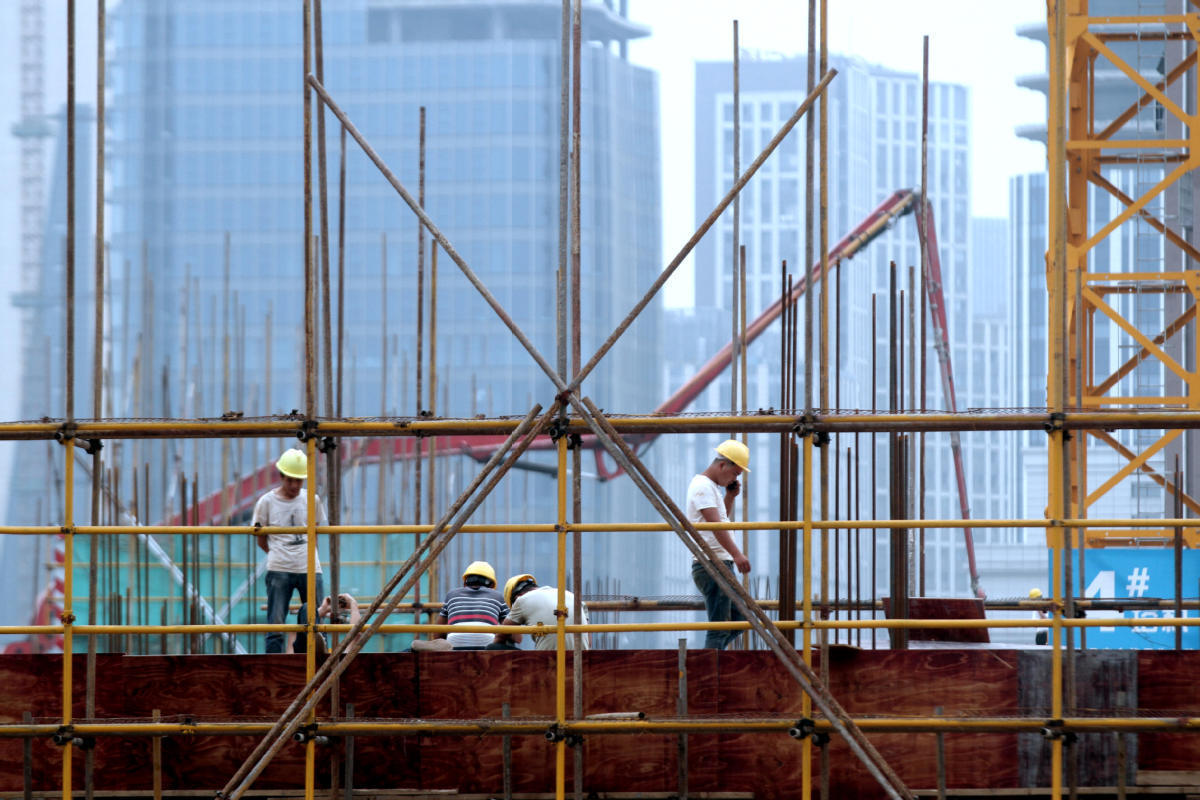Jiangsu looks to Belt, Road to deepen international capacity cooperation

Builders work at a property construction site in Huai'an, Jiangsu province. (China Daily/Zhou Changguo)
Jiangsu province will put forward solid measures to deepen cooperation between the province and countries involved in the Belt and Road Initiative.
The provincial government will introduce policies for building a high-quality Belt and Road intersection, including expanding an integrated transportation system, deepening international cooperation and promoting cultural exchanges.
By 2020, the province's strategic location within the initiative will be more evident, and a high-level more open society will be nurtured. By 2025, there will be comprehensive in-depth cooperation between BRI countries, the government said.
The China-United Arab Emirates Industrial Capacity Cooperation Demonstration Zone, which is located in Abu Dhabi, was once praised by President Xi Jinping. In September 2017 it was named China's only Belt and Road capacity cooperation demonstration zone by the National Development and Reform Commission.
In 2018, new outbound investment projects of the province in Belt and Road countries reached 235, up 46.8 percent from the previous year.
Foreign trade of the province grew by 9.5 percent, with exports increasing by 8.4 percent year-on-year in 2018. Registered foreign investment reached $25.59 billion.
Jiangsu is now home to 225 regional headquarters and major operations of multinational corporations.
It also made solid progress in international production capacity and equipment manufacturing cooperation, said Governor Wu Zhenglong during the two sessions.
The province's transaction volume at the first China International Import Expo in Shanghai last year reached $5.89 billion, ranking second in the country.
Xiang Xuelong, Party secretary of Lianyungang, a coastal city in Jiangsu, said the city has taken new steps to enhance opening up and promote the establishment of the BRI.
"The initiative has brought great opportunities for the development of Lianyungang as well," he said. "We'll continue to build large ports, improve transportation and promote opening up to accelerate the city's development."
Xiang said that new port capacity is under construction in Lianyungang, which will greatly improve the province's shipping capacity.
He added that the city already has 70 wharves with the capability to handle ships with a tonnage of 100,000 or higher, and 20 more such ports will be built in the near future.
"Jiangsu's trade volume with countries involved in the Belt and Road Initiative accounted for 11.6 percent of China's total," said Fei Shaoyun, director of the province's Foreign Affairs Office. "It also invested in more than 1,700 programs in those countries. The investment amounted to $16.2 billion.
"We have also invested in six cooperation parks in those countries, which have attracted 85 companies by 2018. It also provided 32,000 jobs for locals."
The province will also encourage its equipment manufacturing enterprises, such as those in construction machinery, rail transit and new power, to be actively involved in infrastructure construction in Africa and Latin America, the government said.
Also, it will help enterprises in many industries, including textiles, petrochemicals, and new energy equipment to build production bases in countries in Southeast Asia, Central Asia and Africa to deepen international capacity cooperation.

